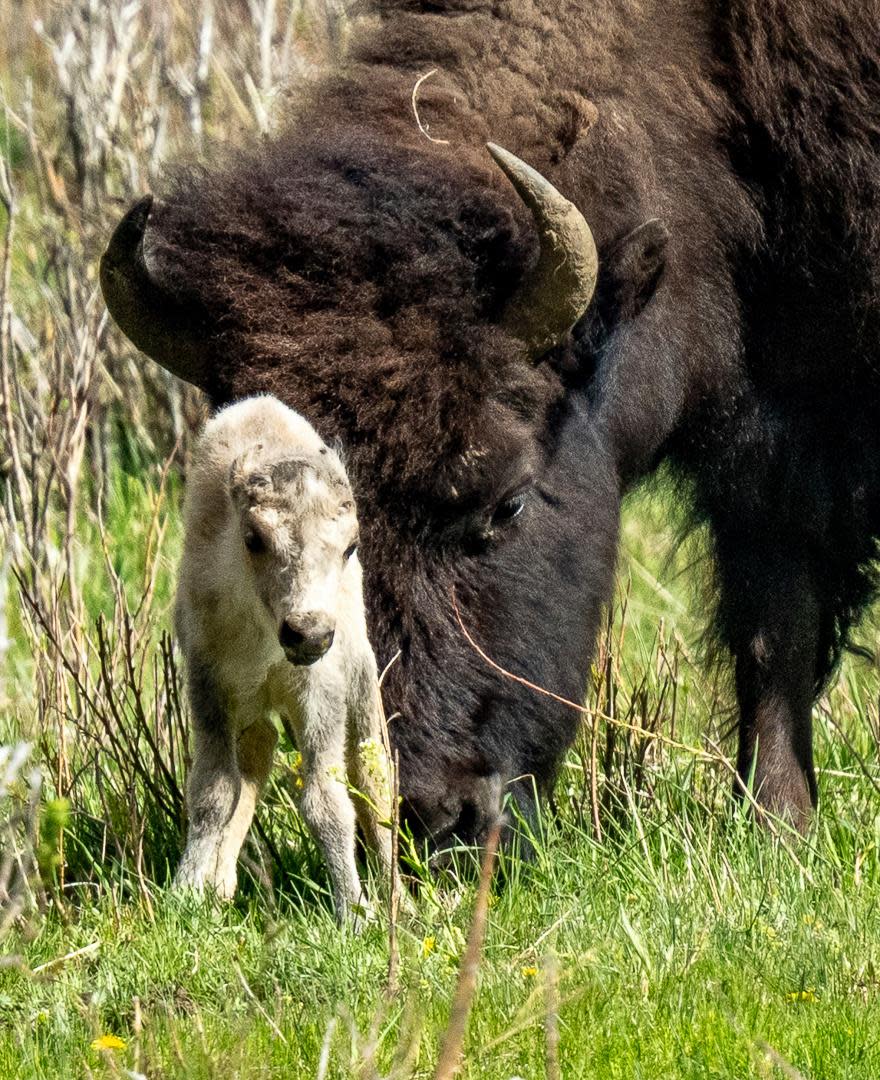Rare white buffalo born at Yellowstone prompts Lakota Sioux celebration

A rare white buffalo has been born in Yellowstone national park, with the arrival prompting local Lakota Sioux leaders to plan a special celebration, with the calf representing a sign of hope and the need to look after the planet.
The white calf was reportedly spotted shortly after its birth, on Tuesday last week, by park visitor Erin Braaten, a photographer. She took several shots of the wobbly baby after spotting it amongst a herd of buffalo in the north-eastern corner of the large park, located in Wyoming and a small slice of Montana.
“I couldn’t believe what I was seeing,” Braaten told ABC News. “It was so surreal. I just knew it was something special and one of the coolest things I’ve ever photographed.”
Braaten and her family watched the calf and its mother for another half an hour before coming back on each of the following two days to look for the white calf, but with no further sighting. Braaten said she was “floored” to witness such an unusual arrival.
Park officials at Yellowstone are yet to confirm the birth, although members of the Lakota Sioux tribe will hold a ceremony to celebrate the arrival at the headquarters of the Buffalo Field Campaign, which advocates for the animals, in West Yellowstone on 26 June.
The birth of a white buffalo holds a special significance to the tribe, according to the Buffalo Field Campaign. “The birth of this calf is both a blessing and warning. We must do more,” said Chief Arvol Looking Horse, the spiritual leader of the Lakota, Dakota and the Nakota Oyate in South Dakota, according to AP, referring to looking after nature and the environment.
Tens of millions of buffalo once roamed the plains of the western US, only to be slaughtered on an enormous scale for their hides by settlers, hunters and traders in the 19th century, leaving just a few hundred of the animals unscathed.
The mass killing of buffalo caused severe harm to native American communities that relied upon the animals as a sustainable food source, as well as being a key cultural touchstone.
Buffalo numbers are still diminished but have crept back somewhat in federally-protected Yellowstone Park, where around 5,000 of the animals are allowed to roam.

 Yahoo News
Yahoo News 
